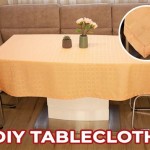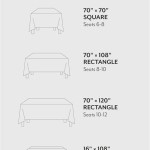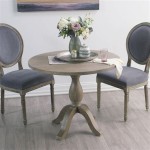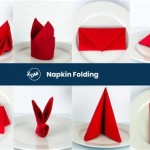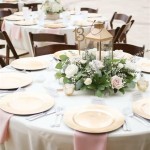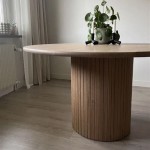Decorating Your Outdoor Space With A Round Concrete Table Top
Outdoor living spaces have become integral components of modern homes, extending living areas beyond the confines of interior walls. The design and furnishing of these outdoor areas are pivotal in creating functional and aesthetically pleasing environments for relaxation, entertaining, and dining. Among the various options available for outdoor furniture, a round concrete table top presents a versatile and durable choice, lending itself to diverse design aesthetics and functional requirements. Its inherent strength, coupled with its malleable design potential, makes it a desirable addition to patios, gardens, balconies, and other outdoor settings.
The selection of a suitable table top material is paramount when planning outdoor decor. Considerations such as weather resistance, maintenance requirements, and aesthetic appeal must be carefully assessed. Concrete, known for its robustness and timeless appeal, stands out as a material well-suited for outdoor applications. A round concrete table top, in particular, can serve as a focal point in an outdoor space, offering both visual appeal and practical utility. Its circular form promotes conversation and facilitates easy interaction among people seated around it, making it ideal for social gatherings and outdoor dining.
This article will explore the various facets of incorporating a round concrete table top into outdoor decor, covering its advantages, design considerations, styling options, and maintenance aspects. Understanding these factors will enable informed decision-making and facilitate the creation of an outdoor space that is both functional and reflective of individual aesthetic preferences.
Durability and Weather Resistance
One of the primary advantages of a round concrete table top lies in its exceptional durability and resistance to the elements. Unlike materials such as wood or plastic, concrete is inherently resistant to water damage, insect infestation, and rot. This inherent resilience makes it an ideal choice for outdoor furniture, where exposure to rain, sun, wind, and temperature fluctuations is inevitable.
The inherent density of concrete provides a high degree of stability. A round concrete table top is less likely to be overturned by strong winds compared to lighter alternatives. The solid nature of the material also contributes to its resistance to impact and scratching, ensuring that it can withstand the rigors of outdoor use. This durability translates into a longer lifespan, making a round concrete table top a cost-effective investment in the long run.
Furthermore, modern concrete formulations can be enhanced with additives and sealants that further improve their weather resistance. These treatments can protect the table top from staining, fading, and the damaging effects of ultraviolet radiation. Sealants can also create a water-repellent surface, preventing water from seeping into the concrete and causing cracks or other forms of deterioration. The application of appropriate sealants is crucial for maintaining the appearance and structural integrity of a round concrete table top over time.
It's important to note that while concrete is durable, proper curing and sealing are still required to maximize its lifespan. Ensure that the concrete table top has been properly cured after its creation. Regular cleaning and re-sealing the concrete periodically helps to maintain its durability and appearance. The frequency of resealing is dependent on the level of exposure to the elements.
Design and Styling Considerations
The versatility of concrete as a design medium allows for a wide range of aesthetic possibilities when incorporating a round concrete table top into an outdoor space. The table top can be customized in terms of color, texture, and finish, allowing it to seamlessly integrate with diverse architectural styles and landscape designs. Smooth, polished concrete offers a sleek and contemporary look, while textured or exposed aggregate finishes can lend a more rustic or industrial feel.
The choice of table base plays a crucial role in defining the overall aesthetic of the table. A metal base, such as wrought iron or stainless steel, can complement a modern or industrial design scheme. Wooden bases, on the other hand, can provide a warmer and more organic contrast to the coolness of the concrete. The base can also influence the functionality of the table, with options ranging from simple pedestal designs to more elaborate configurations with multiple legs or integrated storage.
The size of the round concrete table top should be proportional to the size of the outdoor space and the number of people it is intended to accommodate. A small table is ideal for intimate settings or balconies, while a larger table is better suited for larger patios or gardens where it can serve as a gathering place for larger groups. The height of the table should also be considered, ensuring that it is comfortable for dining or casual conversation. Standard dining table height is approximately 30 inches, while coffee tables typically range from 16 to 18 inches in height.
The surrounding decor should complement the round concrete table top and create a cohesive and inviting atmosphere. Outdoor seating options, such as chairs, benches, and loveseats, should be carefully selected to match the style and color palette of the table. Consider material choices that contrast with the concrete, such as cushions with vibrant colors, textures, or natural wood furniture. Outdoor rugs can define the seating area and add warmth and comfort underfoot. Plants, both potted and in the surrounding landscape, can soften the hard edges of the concrete and bring a sense of nature to the space.
Lighting is another important element to consider when designing an outdoor space around a round concrete table top. String lights, lanterns, or spotlights can create ambiance and extend the usability of the space into the evening hours. Strategic placement of lighting can highlight the texture and form of the concrete table top, adding visual interest to the overall design.
Maintenance and Care
While concrete is a durable material, proper maintenance and care are essential to preserve the appearance and extend the lifespan of a round concrete table top. Regular cleaning is necessary to remove dirt, debris, and spills that can stain or damage the surface. A mild soap and water solution is typically sufficient for routine cleaning. Avoid using harsh chemicals or abrasive cleaners, as these can damage the sealant or the concrete itself.
Sealing is a crucial step in protecting a concrete table top from stains and water damage. A high-quality sealant should be applied to all surfaces of the table top, including the edges and underside. The type of sealant should be chosen based on the intended use of the table and the level of exposure to the elements. Water-based sealants are generally suitable for interior use, while solvent-based sealants offer better protection for outdoor applications. Follow the manufacturer's instructions carefully when applying the sealant, ensuring that the surface is clean and dry before application.
Re-sealing should be performed periodically to maintain the protective barrier. The frequency of re-sealing will depend on the type of sealant used and the amount of wear and tear the table top is subjected to. Inspect the table top regularly for signs of damage, such as cracks or chips. Small cracks can often be repaired with a concrete patching compound, while larger cracks may require professional repair. Promptly addressing any damage will prevent further deterioration and extend the lifespan of the table top.
During periods of inclement weather, additional precautions may be necessary to protect a round concrete table top. In areas with harsh winters, consider covering the table with a waterproof tarp or storing it indoors to prevent damage from freezing temperatures and ice. Removing snow and ice from the table top regularly will also help to prevent cracking and spalling. Protecting your table from extreme weather conditions protects your investment.
For outdoor spaces prone to algae and mildew growth, consider a concrete cleaning solution specifically designed for algae and mildew removal. Regular use can prevent unsightly stains and maintain the cleanliness of the table top. Always test cleaning solutions in an inconspicuous area first to ensure they do not damage the sealant or the concrete surface. A proactive approach to maintenance minimizes long-term wear and tear.

Pomona 51 Concrete Round Outdoor Dining Table White Pottery Barn

56 Outdoor Concrete Furniture Ideas With Pros And Cons Digsdigs

Concrete Dining Table Design Ideas

Abbott Concrete Acacia Round Outdoor Bistro Table 36

Pomona 51 Concrete Round Outdoor Dining Table White Pottery Barn

Diy Faux Concrete Coffee Table With Spray Paint Savvy Apron

56 Outdoor Concrete Furniture Ideas With Pros And Cons Digsdigs

31 Outdoor Concrete Furniture Ideas With Pros And Cons Shelterness

35 Inspiring And Exciting Outdoor Concrete Furniture Ideas With Pros Cons

26 Best Patio Decorating Ideas Decor On A Budget
Related Posts

